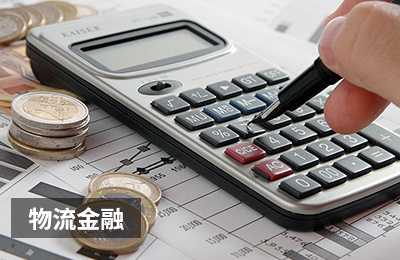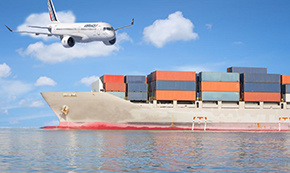Shenzhen Huijitong International Freight Forwarding Company provides small and medium-sized enterprises with one-stop services such as customs clearance, tax rebates, logistics, foreign exchange, financing and other foreign trade supply chain services.
1. Customs clearance i.e. customs clearance in international logistics
Customs clearance refers to the procedures of import and export or transit of goods into and out of a country's customs territory in accordance with the laws, regulations and provisions. Customs clearance means fulfilling all obligations, customs declaration, inspection, taxation and release procedures, and the cargo can be picked up by the owner or the declarant.
Likewise, all means of transport carrying imported or exported goods to or from the border or in transit must be declared to Customs, undergo Customs procedures and receive permission from Customs before they can circulate freely.
Main customs clearance ports:
Pearl River Delta Region. Hong Kong, Shenzhen, Guangzhou, Dongguan, Huizhou, Jiangmen, Zhongshan, Zhanjiang, etc.
Yangtze River Delta Region: Shanghai, Ningbo
North China: Tianjin, Beijing, Qingdao, etc.
Other areas: Xiamen, Fuzhou, etc.

Second, the specific process of customs clearance
1. Change the order-go to the freight forwarder or shipping company to change the D/O.
2. Electronic declaration-computer pre-recording, document review, delivery, contact with customs/release.
3. Inspection declaration-After the electronic declaration is released, one of the four copies of the customs declaration form shall be used to go to the Commodity Inspection Bureau to go through the quotation procedures, and the customs clearance form or the third inspection seal shall be issued.
4. On-site handover form-customs on-site handover form.
5. Inspection-Customs will conduct inspections based on the supervision conditions of the declared name of the goods and the inspection probability of the day. If there is an inspection, an inspection notice will be issued.
6. Release-Customs release has the following steps: One-time release issuance of inspection notice or two direct release inspections without inspection, then release after customs seal.
How to provide "export rebate" services?
Export rebate is a tax incentive granted by the state to the exporter or seller for tax leverage to refund the value added on exported goods. We provide export manufacturers or sellers with VAT collection agency services for exporting goods or selling goods to foreign trade enterprises and other enterprises, including: export tax exemption agency, tax refund after levy, export "exemption, credit and refund" tax and other tax refund agency services, and license registration, prepaid tax refund agent services etc.
The goods to be exported for tax refund need to meet four conditions: first, the goods to be exported must be within the scope of VAT and excise tax collection; second, the goods are goods declared to leave the country; third, the goods need to be the sales products that are financially made for export by the company where they are located; fourth, the goods are a collection of goods for write-off.
The process of export rebate
1. International freight forwarders can apply for write-off orders online, log into the electronic port enforcement system - select Export Receipt - Write-off Order Application in turn.
2. After receiving the paper write-off form, go to the Foreign Exchange Bureau to receive it with the applied IC card of the electronic port and the "Letter of Introduction of Export Enterprise Write-off Form" with the official seal of the enterprise.
3. To file paper write-offs, log in the electronic port enforcement system - select Export Receipt - select Port Filing in turn.
4. Customs clearance procedures.
5. Receive and fill out a special invoice for export goods at the State Tax Bureau.
6. Levy and exemption declaration (data entry on the export tax refund declaration software, print two copies. One copy for the foreign exchange bureau and the other copy for exporting unit).
7. Electronic port - Export collection - delivery of documents by enterprises.
8. Enter the online export collection and write-off system for declaration and print out the export collection batch write-off information registration form.
9. Write-off of export receipts in ICBC, write-off of date and amount of receipt.
10. Apply for write-off sheets in foreign exchange bureau office, customs declarations, ICBC stamped write-off sheets, export receipt batch write-off information registration forms, electronic port IC cards.
11. Access to IRS system to enter returns and tax returns.
12. Uploading the tax exemption data from the export goods refund and tax exemption declaration system to the State tax website.
13. Go to the system of declaration of tax refunds and exemptions for export goods.
14. Prepare paper materials for export tax refunds and bring a USB stick to the IRS for filing.
15. Wait for a call from the IRS to get the tax refund approval.
16. Wait for a call from the IRS and go to the IRS to apply for a tax refund (bring the tax refund approval, company seal and seal stamp).
17. Generally, the bank will credit the company's account from the national treasury within one week after the tax refund has been processed.
The above is an introduction to the export tax refund process.
3. What is "Delivered Duty Paid "? What is " Delivered Duty Unpaid "?
Delivered Duty Paid (... named place of destination) = DDP term, which is a term with the greatest responsibility, cost and risk for the seller. The DDP term applies to all modes of transport.
Delivery Duty Unpaid (DDU, Delivered Duty Unpaid---named port of destination), refers to the seller is responsible for renting a means of transport, transporting the cleared goods to the designated destination in the specified time, delivering the goods on the transportation tools and bearing the costs and risks before delivery (Excluding duties, taxes and other official charges payable at the time of importation)
4. What is "tariff prepayment"?
Tariff prepayment means complying with DDP terms, and the seller in China will help the customer to complete customs clearance and pay taxes at the location specified by the customer, and the seller needs to bear all the risks and costs of transporting the goods to the destination point, including the responsibility and risk of customs-related procedures, as well as the payment of handling fees, duties, taxes and other fees.
Logistics:
1. What is international logistics?
International logistics, also known as global logistics, refers to an international commodity transaction or exchange activity in which physical movement of materials is carried out to overcome the spatial and temporal distances between production and consumption when production and consumption are carried out independently in two or more countries, thereby completing the ultimate purpose of international commodity transactions, i.e., to achieve the trade convection conditions in which the seller delivers documents, goods and receives payment, and the buyer accepts documents, pays and receives payment for the goods.
Differences between traditional logistics and international logistics:
Traditional logistics: generally refers to the packaging, transportation, loading and unloading, storage after the product leaves the factory, while modern logistics puts forward the concept of logistics systematization or called overall logistics, integrated logistics management.
International logistics: The process of physical movement of goods from a place of supply in one country (region) to a place of receipt in another country (region).










